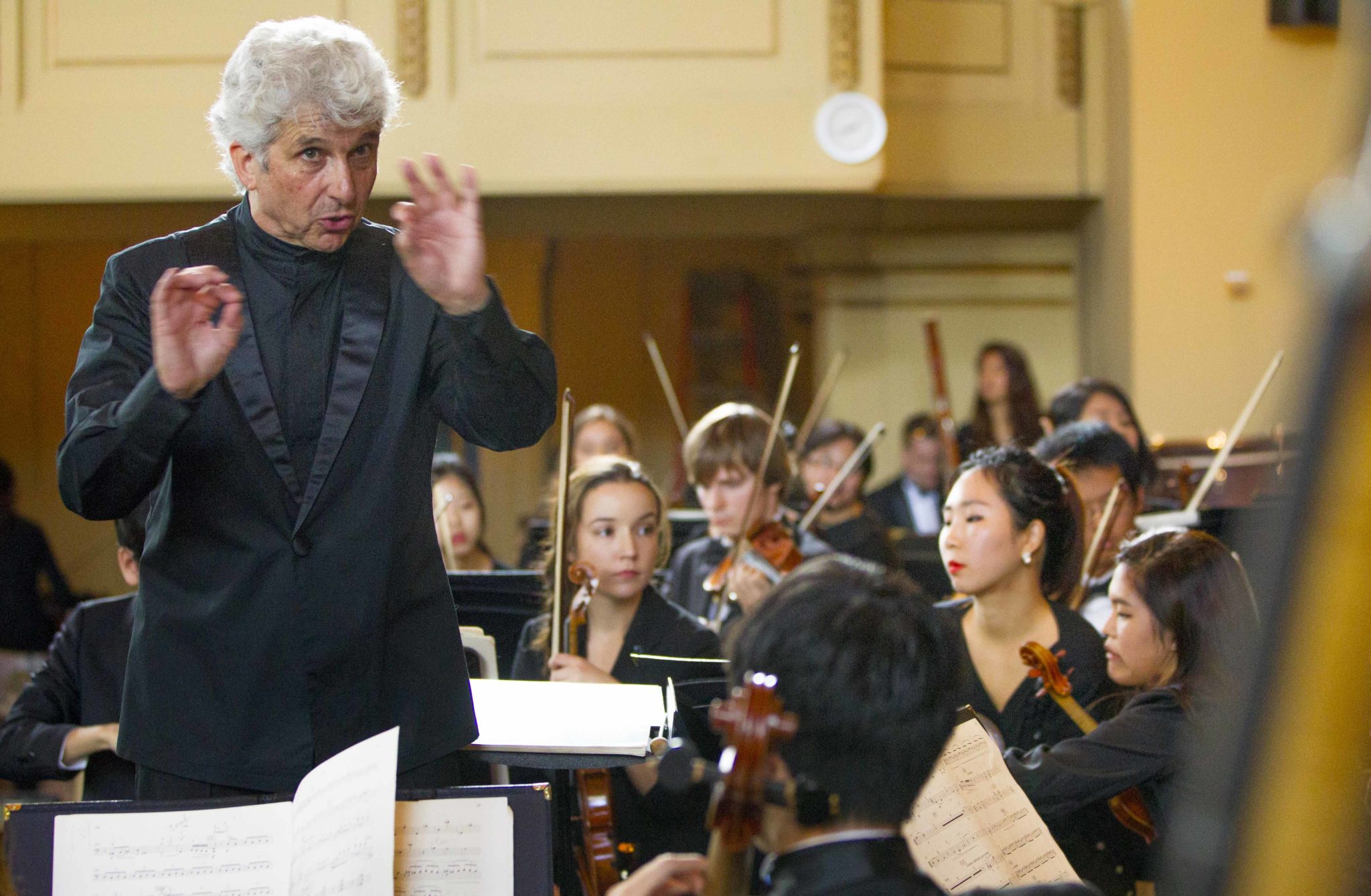
Courtesy of Bob Handelman
The Sultan Schahriar, convinced that all women are unfaithful, vowed to kill each of his wives after the first night of marriage. But one of those wives — the Sultana Scheherazade — kept herself alive for 1,001 nights by telling him stories.
Each night, the story ended in a cliffhanger, postponing his desire to kill her in anticipation of the next night’s story. Eventually, he fell in love with her and abandoned his wish to kill her.
A domineering bass line and sinuous violin melody represent Sultan and Scheherazade throughout Russian composer Nikolai Rimsky-Korsakov’s “Scheherazade,” a programmatic piece based on “One Thousand and One Nights,” or “Arabian Nights.” On Thursday at 7:30 p.m. in Woolsey Hall, the Yale Philharmonia will present a concert featuring “Scheherazade,” Claude Debussy’s “Trois Nocturnes” and Carl Maria von Weber’s Bassoon Concerto in F major. The Debussy will be in collaboration with the Yale Schola Cantorum, and the Weber will feature Woolsey Hall Concerto Competition winner Eleni Katz MUS ’20.
According to the Philharmonia’s Principal Conductor Peter Oundjian, the concert has a “nocturnal theme with an entr’acte of bassoon entertainment, where each of the three pieces has a completely different sound world.”
Debussy, a French Impressionist composer, wrote his Nocturnes in the late 19th-century.
“He creates a most incredible atmosphere that is both brilliant and haunting,” Oundjian said.
The piece has three movements: “Nuages,” “Fêtes” and “Sirènes” which translates to “Clouds,” “Festivals” and “Sirens,” respectively.
Like an Impressionistic painting, each movement creates an aural image. The first movement depicts immutable clouds, and the second is lively and dancelike. The third movement will incorporate members of the Schola Cantorum in the chorus part, which represents the voices of the sirens.
“The different images of nocturnes really bring to the fore Debussy’s powerful imagination, it’s extraordinary music to listen to,” Oundjian said.
Weber’s Bassoon Concerto will follow. Written in the early 19th century, the piece is one of the two most prominent bassoon concertos in the repertoire.
Katz, who will perform the concerto, began her musical studies in the fourth grade as a clarinetist. Three years later, Katz said, as she considered focusing on nonmusical aspects of her life, her band director approached her and said, “I know you love [music making]. You know, it takes a very special person to play the bassoon,” and demonstrated how the instrument worked. Katz then became the only bassoonist in her middle school band.
“I’m grateful for a lot, but I’m particularly grateful for the intimacy of my relationship with the bassoon,” Katz said.
The Weber was the first concerto Katz learned as a high school student.
“The Weber is a piece that has been on my stand throughout my life as a bassoonist, and I’m always uncovering different aspects of my playing through my journey with this piece,” Katz said.
Weber, an operatic composer, creates a storyline that transitions from heroic to reminiscent to playful through the concerto’s three movements. Katz said she associates the first movement of the Weber with the strength and resilience required to adjust to a new educational environment.
“My favorite part is in the lyrical second movement,” Katz said. “Everything stops, and it’s only the bassoon and two French horns in the back of the orchestra. Time is not a factor. It reminds me about running in the woods with two of my close friends who played horn.”
According to Katz, the third movement is a musical joke. “After all the drama in the first two movements, at the end of the day, so what?” Katz said.
The concert will close with the deeply romantic and emotionally charged “Scheherazade.”
“Part of ‘Scheherazade’ is this concept of ‘be interesting or die, because you’re performing as if your life depends on it,’” said bassoonist Andrew Sledge MUS ’20. “It’s this process of exploring as many highs and lows as possible and embracing the inner drama we carry around.”
The 1888 piece has four movements: “The Sea and Sinbad’s Ship,” “The Story of the Kalendar Prince,” “The Young Prince and Princess” and “Festival at Baghdad: The Sea.” The motivic interaction between the characters of Scheherazade and the Sultan unify the four stories.
According to Oundjian, the piece is often considered the first concerto for orchestra because of its virtuosic qualities and extensive solo passages for many instruments. The violin has the most prominent of these solos, which appears in every movement in a different form.
“The solos make an effort to portray [Scheherazade’s] wit and intelligence and power over this horrible misogynistic Sultan,” said violinist Ariel Horowitz ’19 MUS ’20, who will be playing the solos representing Scheherazade. “I am trying to think about speaking through the solos rather than just playing with a pretty sound to communicate that this was something meant to be spoken and shared as folklore.”
As the piece progresses and the Sultan becomes entranced with Scheherazade and her stories, the ominous bass line representing the evil Sultan morphs into melodies with emotional warmth.
“It’s hard not to love Scheherazade,” Oundjian said. “Music cannot be either more entertaining or any more beautiful than this.”
The next Philharmonia concert will be in January 2020.
Phoebe Liu | phoebe.liu@yale.edu







